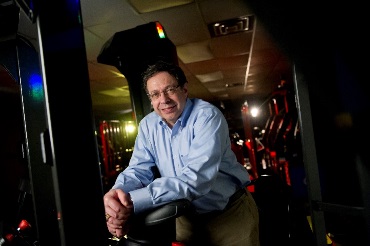Looking Ahead to 2017 Automation Trends and Impacts
There are safety issues, including ergonomics, repetitive motion, health impact issues, and legislative initiatives causing impacts for 2017, says robotics safety expert Mitchell Weiss. He is CTO of Pittsburgh-based Seegrid, is an accomplished executive of automation and robotics companies. Weiss oversees the engineering and manufacturing departments, providing system designs and architectures, as well as the company’s technology roadmap. As a senior executive for high-tech companies (Brooks Automation/PRI Automation, ProgramMation Inc., United States Robots, Inc.), Weiss’ influential expertise involved automation systems in electronics manufacturing, automotive, warehousing, and distribution.
Weiss spoke with industry leaders and cohorts in the standards and testing community for autonomous vehicles and landed on two new issues that are going to be felt more in industry, beginning in 2017.
Alarm Fatigue
 The health care sector, including hospitals, has already seen these safety issues. The first new trend is alarm fatigue. There are so many pieces of automation beeping, flashing, and warning operators and "bystanders" in facilities; the warnings become part of the background noise and are ignored. Only the shrillest, loudest alarms illicit a response because they generate sufficient levels of annoyance.
The health care sector, including hospitals, has already seen these safety issues. The first new trend is alarm fatigue. There are so many pieces of automation beeping, flashing, and warning operators and "bystanders" in facilities; the warnings become part of the background noise and are ignored. Only the shrillest, loudest alarms illicit a response because they generate sufficient levels of annoyance.
Even in the industrial sector, Seegrid vision guided vehicles (VGVs) beep and flash continuously while moving among the workforce and most people either ignore the vehicles as they approach or complain that the beeping is too loud. The workforce becomes immune to the operation and rely on the safety systems and interlocks to protect them. This is like operating with a press, ignoring the position of the ram and just counting on the light curtain to protect one's hands. The safety systems are there to protect in case of an accidental operation, not for complacency or dangerous behavior. Weiss asserts there is going to be an increase of risky behaviors as a result of alarm fatigue; if a warning can be ignored, it should not exist as a warning.
Intellectual Overload
The second safety trend for 2017 is intellectual overload, resulting in fatigue and accidents. As tasks become more automated, or more tele-operated, the operator must pay attention to more activities. As his/her workload is increases, by virtue of the expanded number of functions being managed, there are dire safety consequences.
The consequence of intellectual overload includes fatigue, and resultant effects, such as headaches, RM (repetitive motion) injuries, and dangerous mistakes. Imagine the emergency responder operating a remote robot with two arms, stair climbers, and cameras. The operator has to control so many functions and can only remain on task for short stints; the concentration level is too high to sustain. This is similar to a workcell operator managing a machining center with ten tools, all operating simultaneously, but on different parts and functions.
Weiss further identified the top three newest trends impacting occupational health and safety for 2017 as increased complexity of automation, collaborative automation, and complexity of user interfaces. The issues driving these imperatives for 2017 include increased use of Big Data, artificial intelligence, and IIoT (Industrial Internet of Things) in the workplace. The need for speed in the custom order, same day delivery e-tail marketplace encourages vast amount of data while impacting occupational health and safety.
Dramatic Changes
Compared to just five years ago, dramatic changes in the OH&S arena include self-guided machines working alongside people. Seegrid's business is predicated on replacing unpredictable and dangerous human behavior with considered and predictable machine behavior. A major part of its value proposition is reducing forklift related injuries and damage, supporting the fork truck free movement. (www.seegrid.com.)
Holding a BS from MIT and a Graduate Certificate in IP from Northeastern University, Mitchell Weiss is an expert witness in IP litigation, holds 23 patents, and is vice chair of ASTM F45 Driverless Automatic Guided Industrial Vehicles and a member of ANSI/ITSDF B56.5 Safety Standard for Driverless, Automatic Guided Industrial Vehicles and Automated Functions of Manned Industrial Vehicles. He taught at Penn State and the University of Pennsylvania and lectured at Massachusetts Institute of Technology (MIT). Weiss co-authored Industrial Robotics: Technology, Programming and Applications, and earned several awards, including IndustryWeek's Top 50 R&D Professionals and Supply & Demand Chain Executive’s Pros to Know.
Posted on Dec 09, 2016